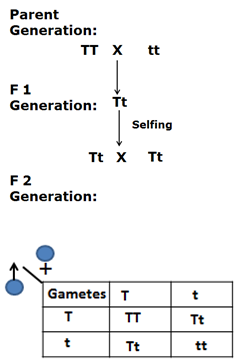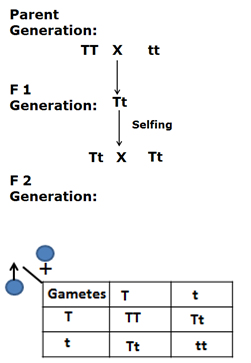Biology:2019:CBSE:[Delhi]:Set-III
To Access the full content, Please Purchase
-
Q1
At what state does the meiosis occur in an organism exhibiting haploidic life cycle and mention the fate of the products thus produced.
Marks:1View AnswerAnswer:
In haplontic life cycle, organisms undergo meiosis at the zygote stage. The diploid zygote undergoes meiosis to form haploid spores.
-
Q2
Write the number of chromosomes body cells of honey bee workers and drone have.
Marks:1View AnswerAnswer:
Worker honey bee is diploid (2n) and possesses 32 chromosomes, while the drone is haploid (n) and possesses 16 chromosomes.
-
Q3
What are 'flocs', formed during secondary treatment of sewage?
Marks:1View AnswerAnswer:
Flocs are the mesh-like structures formed by masses of bacteria associated with fungal filaments. These flocs feed on the organic matter present in the wastewater. It also reduces the BOD level in the water.
-
Q4
Write any two places where methanogens can be found.
Marks:1View AnswerAnswer:
Two places where methanogens can be found are rumen of cattle and anaerobic sludge.
-
Q5
Name the layer of the atmosphere that is associated with 'good ozone'.
Marks:1View AnswerAnswer:
Stratosphere is the layer of atmosphere that is associated with good ozone.
-
Q6
Mention the term used to describe a population interaction between an orchid growing on a forest tree.
Marks:1View AnswerAnswer:
The interaction between an orchid growing on a forest tree is Commensalism.
-
Q7
British geneticist R.C. Punnett developed a graphical representation of a genetic cross called "Punnett Square". Mention the possible result this representation predicts of the genetic cross carried.
Marks:1View AnswerAnswer:
Punnett square is a graphical representation that is used to calculate the probability of all possible genotypes of offspring in a genetic cross.
The results of Punnett square of monohybrid cross between parental tall (TT) and dwarf (tt) plant, will be:


Genotype ratio: TT:Tt:tt
1:2:1
Phenotype ratio: Tall: Dwarf
3:1
-
Q8
It is said apomixes is a type of asexual reproduction. Justify.
Marks:2View AnswerAnswer:
An apomixis is a form of asexual reproduction that mimics sexual reproduction because:
- In apomixis, seeds are produced without fertilisation. Since fertilisation does not occur, it is a form of asexual reproduction.
- The embryos produced by this mode of reproduction are genetically identical to each other, which is a characteristic of asexual reproduction.
-
Q9
Mention four significant services that a healthy forest ecosystem provide.
Marks:2View AnswerAnswer:
Four significant services provided by a healthy forest ecosystem are:
i. Mitigation of droughts and floods
ii. Purification of air
iii. Cycling of nutrients
iv. Maintenance of biodiversity -
Q10
Substantiate with the help of one example that in an ecosystem mutualists (i) tend to co-evolve and (ii) are also one of the major causes of biodiversity loss.
Marks:2View AnswerAnswer:
i. In nature, mutualists often co-evolve such as in Mediterranean orchid, Ophrys. It employs ‘sexual dishonesty’ in order to get pollinated by a species of bee. All the species of the genus Ophrys have such flowers in which one of their petals resembles a female bee. This is a case of deception when a male bee perceives the petal as a female bee and ‘pseudocopulates’ with the flower. In case, if female bee slightly changes its colour pattern ever, the success of pollination will reduce unless orchid flower co-evolves to maintain the resemblance with a female bee.
ii. In nature, mutualists often co-extinct. For example, a fig species can be pollinated only by its ‘partner’ wasp species. The female wasp searches the fruit for oviposition. While doing so, it pollinates the flower. In this example, one partner will automatically get extinct if other is eliminated in nature.



